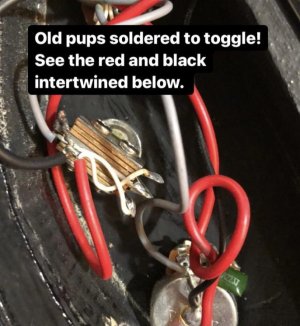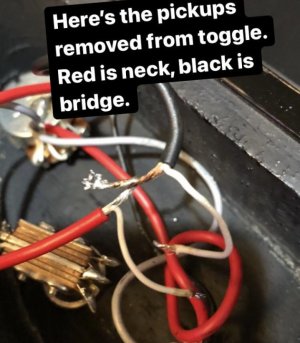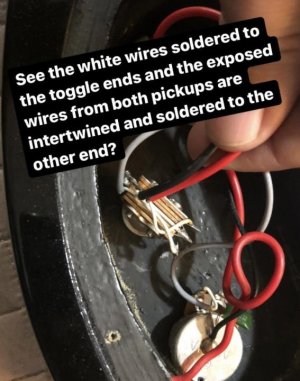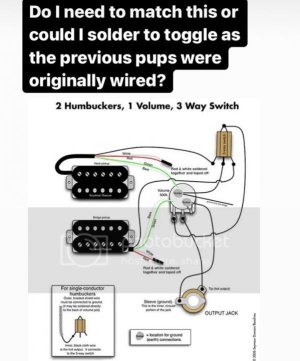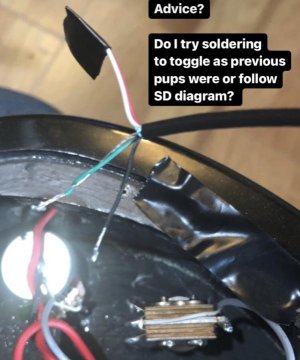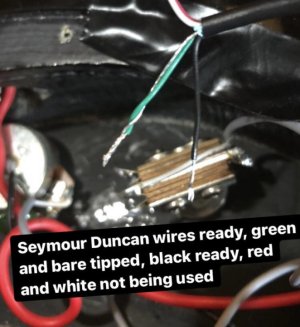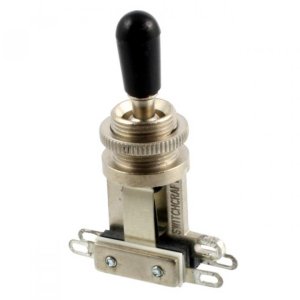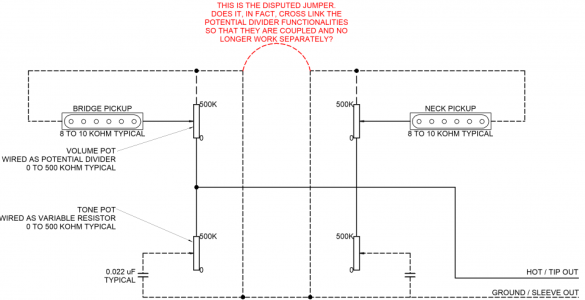Turnaroundrememberme
New member
Stock pickups in Kramer Pacer 202s were soldered to toggle switch, white wires to ends of toggle, thicker exposed wires from each pickup intertwined and soldered to the other end of toggle.
Putting in Seymour Duncan JB and Jazz (no splitting so red and white not used). I could follow SD diagram though it doesn’t match what I see going on. Could I just solder to toggle like the previous setup was? And if I did that, which wires would intertwine (the greens and bares?) and which would I solder to toggle ends (the black ones?)
Thanks everyone!
Putting in Seymour Duncan JB and Jazz (no splitting so red and white not used). I could follow SD diagram though it doesn’t match what I see going on. Could I just solder to toggle like the previous setup was? And if I did that, which wires would intertwine (the greens and bares?) and which would I solder to toggle ends (the black ones?)
Thanks everyone!

